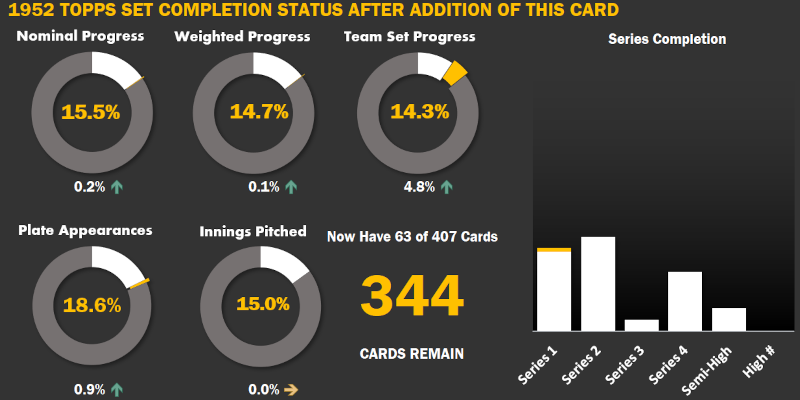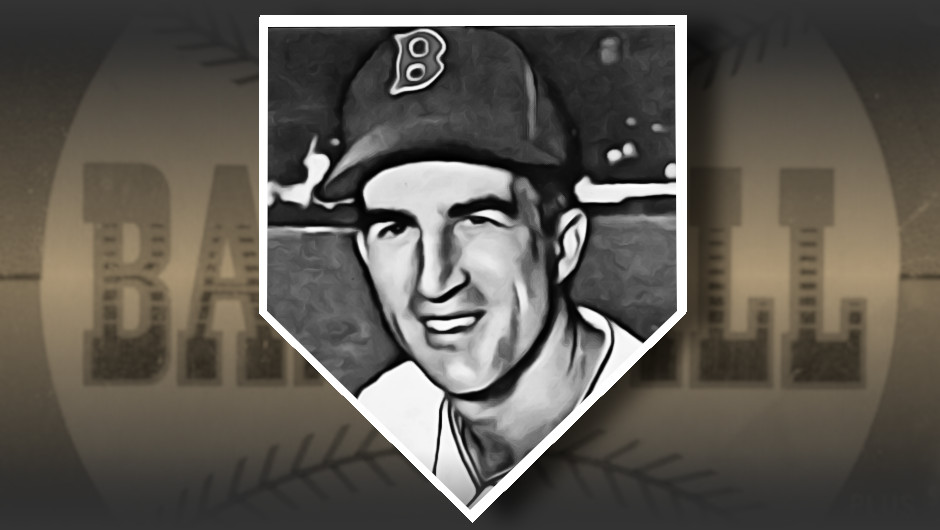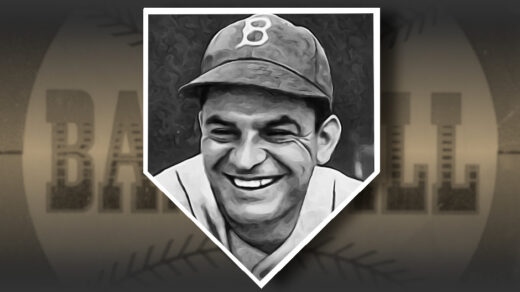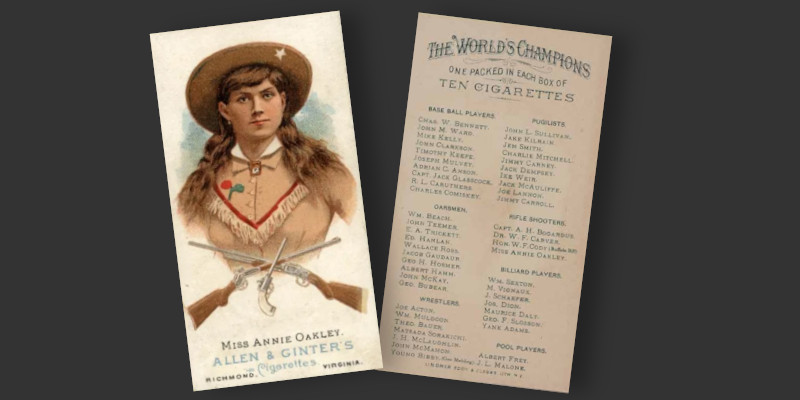
Here’s a really interesting card. It hails from an 1887 group of cards that were tucked into packages of Allen & Ginter cigarettes. Designated by collectors as the N28 set, the collection focused on 50 notable personalities across a wide spectrum of sports. While Baseball and combat sports comprise nearly half the set, there is a surprising number of competitive rowers and billiard players in the checklist. There are also four rifle shooters, most notably Buffalo Bill Cody and Annie Oakley.
Oakley was a seemingly preternatural sharpshooter that captivated audiences in Buffalo Bill’s Wild West Show. Often the tour’s top-earning performer, aside from Cody, she would astound audiences by shooting dimes thrown in the air from 90 feet away. Another trick saw her hit the narrow edge of a playing card from a similar distance, then follow up the shot with additional bulls-eyes as the card ricocheted in different directions. Her most famous stunt involved shooting the ashes from a cigar held by her husband.
She joined Cody’s Wild West Show in 1885 and was well known enough two years later to be featured in the above Allen & Ginter tobacco advertisement. Another two years after appearing on this card she would find herself enmeshed in a world tour, one that had the potential to alter history.
In 1889 she was performing at the Charlottenburg Race Course in Western Berlin. Following the usual pattern of her act, Oakley talked up the skill needed to hit a target when the slightest mistake could mean serious harm to someone else. After going through all the ways something could go awry, she then turned to the audience to ask for volunteers to hold a lit cigar while she used a gun to shoot away the ashes. Typically, crowds would titter in nervous laughter at such an invitation before her husband would step out of his seat to perform this task. In this case, however, nonother than Kaiser Wilhelm II stepped forward to hold the cigar. She successfully shot away the ashes and breathed a sigh of relief alongside the emperor’s security detail.
At the time of this event Wilhelm was only one year into his reign and Germany was at peace with the countries along its European borders. 25 years later the nation would become one of the principal combatants in World War I, participating in one of the bloodiest wars in human history. Multiple armchair historians have wondered if slight changes in the events leading up to the conflict could have prevented major portions of the event.
What if Annie Oakley had missed her shot in 1889? What if Wilhelm had been accidentally killed? Would Germany have still honored agreements to back Austria against Serbia? Would the outbreak of fighting have still pulled in Germany along with neighboring France and England? If World War 1 had remained a regional fight, would Russia still have experienced enough pressure to see its government fall in a civil war and communism take root? Without WW1, would Hitler have ever become anything more than a maladjusted painter? Could the European theater of World War 2 have somehow been averted in its entirety?
Playing ‘What-If’ in the National League
It was in the WW2-era that Bob Elliott appears in baseball history. He broke in with the Pittsburgh Pirates just as stars like Heinie Manush and the Waner brothers were making their exits. The team needed a big bat to generate run support in pitcher-friendly Forbes Field. Elliott picked up a homerun and 3 RBIs in his first game. Soon he was regularly driving in 100+ RBIs despite the dimensions of the park keeping his homerun totals in single digits. A trade to the Boston Braves for the 1947 season saw him make an immediate impact, capturing the MVP award as well as earning the nickname “Mr. Team” for the way he carried the club throughout the season.
Elliott took multiple baseballs to the head in his first few years in the majors, losing consciousness several times. He was beaned in 1941. A practice grounder hit a rock and knocked him out in 1942. Peanuts Lowrey sent him to the ground again in 1943 on a bad throw across the infield.
These random accidents altered the course of Elliott’s decade. When called up for review by the military draft in 1943, he was excused on account of the effects of repeated head injuries. Still patriotic, Mr. Team spent his offseason working for an aviation defense contractor. One has to wonder how he would have spent the war years if he had not been hit by so many baseballs. He undoubtedly would have been drafted, and his work ethic probably would have put him closer to a fighting role rather than one in public relations or physical education. Given his “Mr. Team” success, I can imagine him earning the honorific “Captain America” in this alternate history of military service.
One of the Better Players of All Time
Bob Elliott is one of the best baseball players of all time. He drove in more runs than any other batter of the 1940s and managed to rank third in runs scored. An exceptionally high .380 career wOBA and a solid 50+ WAR places him just inside my ranking of the sport’s top 200 position players, essentially labeling him as one of the game’s top 1%. Helping burnish his credentials was an excellent eye for the strike zone. Elliott was a master of avoiding strikeouts and drawing walks. He retired with a walk once every 8 plate appearances and struck out only 7% of the time.
Elliott ranks 16th of all position players appearing in the ’52 Topps set, the highest such rating of any player not already in the Hall of Fame. Elliott commanded less than 1% of the vote in his sole appearance on the ballot while another five lower-ranked players made the cut.
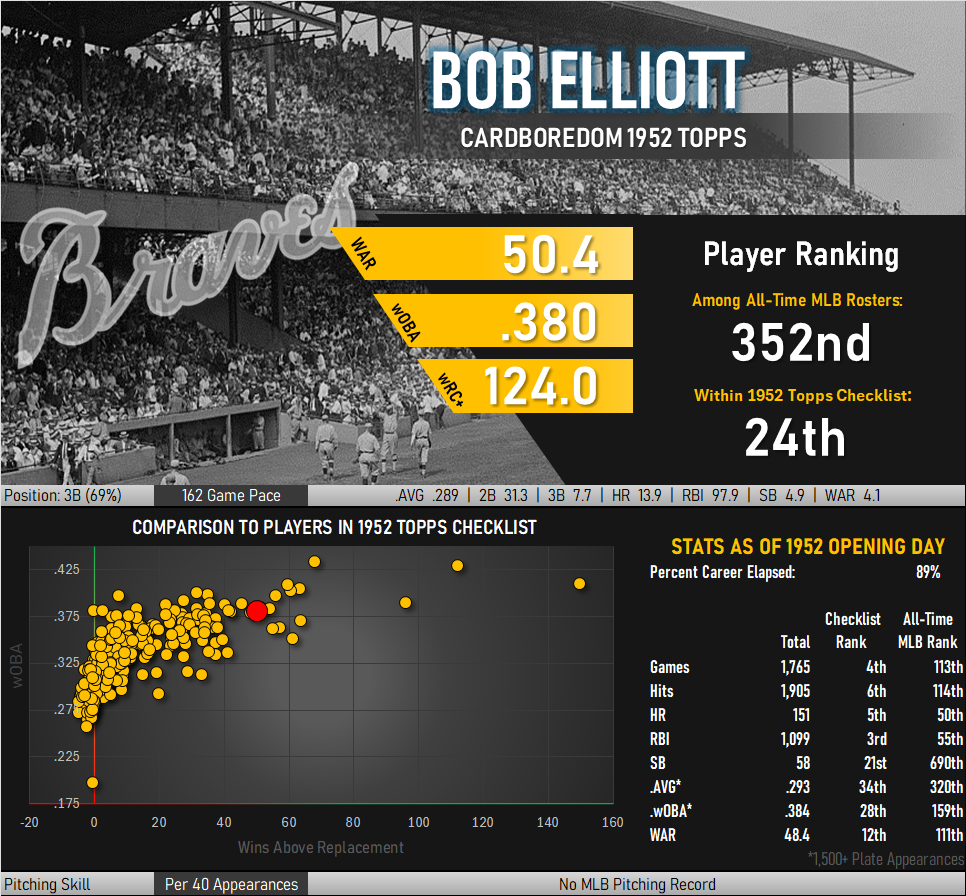
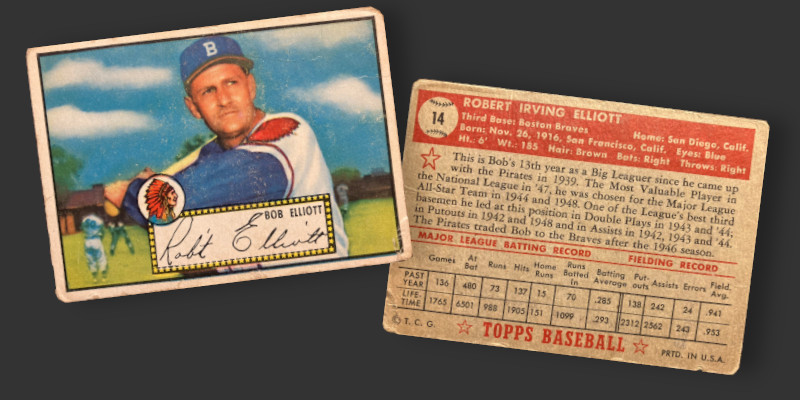
This is obviously a Spring Training photo on Elliott’s 1952 Topps card. Topps knew Elliott was a big name and placed him in the set’s first series checklist to generate interest. While young collectors were busy pulling this Braves card out of packs of bubble gum, Elliott himself stayed tucked away in Boston. A contract dispute was underway after the Braves proposed cutting his salary by 25% for the 1952 season. Elliott did not take the field for Boston and was instead traded in early April to the New York Giants. The Giants sent pitcher Sheldon Jones to the Braves along with $50,000 in cash. Jones appears as a member of New York’s pitching staff in the ’52 Topps set, leaving both sides of the trade unaddressed in the Topps set. Elliott’s move to New York opened the path for a new third baseman to take over in Boston. The team would end the year with a young Eddie Mathews taking his spot and rewriting how we think of the 3B position. Mathews would go on to be added to the ’52 Topps set as the final card in the checklist, a card that would go on to be the most sought-after rookie card Topps ever produced.
The card was added to my collection as part of a 9-card page taken from a set that was being broken up. I like the red, white, and blue color scheme of Elliott’s uniform in the photo as it reminds me of the Captain America colors and the vagaries of chance in determining our future.
